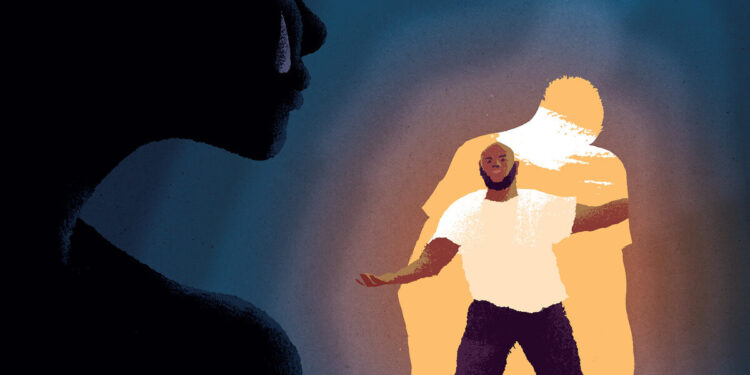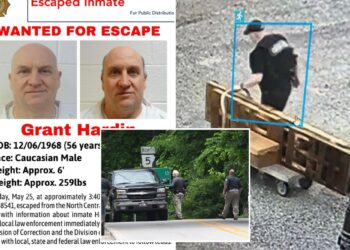Having your freedom snatched away is immensely traumatic. One minute you are living a life of calm. The next minute you are surrounded by walls that seem to be closing in by the second.
I know this firsthand: In November 2016, I found myself detained on New York’s notorious Rikers Island for a murder that I committed eight years earlier, when I was 16 years old.
Detectives from Queens, New York, had made the trek to Pennsylvania, where I had moved, to interrogate me at the state police barracks. About an hour later, I was placed under arrest. Honestly, I wasn’t surprised. I was cognizant that my past actions would one day catch up with me.
I stayed in Rikers’ C-74 unit for two months before relocating to Brooklyn Detention Complex. While it wasn’t as known as Rikers, it felt no less dangerous.
Until the latter part of 2017, the jail lacked security cameras. And the architecture of Brooklyn House, which closed down in 2020, seemed to make officer response times longer. The C-74 unit where I was housed was three stories, and people used the stairs to travel between floors. Brooklyn House was a 12-story building that required most movement through elevators. We only used the stairs if all of the elevators were inoperable.
To make matters more dangerous, there were no automated doors into the housing units. Officers had to manually unlock the doors, and I believe this led them to ignore altercations and acts of aggression.
Brooklyn House had jobs ranging from house detail, which was a fancy title for sweeping and mopping the housing unit, to special sanitation, which entailed cleaning vents and windows. I got one of the most sought-after positions: suicide prevention aide, or SPA.
SPAs walked through their housing units every 30 minutes or so to ensure no one was harming themselves or having suicidal ideations.
Getting the job was surprisingly easy. After a short training on the duties, we only had to take a 25-question test. Most of the questions were multiple choice and a passing grade was 72.
Also, the test-taking wasn’t monitored. A staff member simply handed us the pages through the gate at the unit’s entrance and told us to complete it in the day room. After this certification, we received no further training.
Though I was assigned the morning shift, which ran from 6 a.m. to 2 p.m., corrections officers usually let me stay out 24 hours a day. I suspect that the more SPAs were out, the less officers had to do their own rounds.
Most days on the job were quiet, especially during my shift. While the rest of the detainees were locked in, I would walk the unit, scribble my initials in a logbook and wait for a captain’s signature. If there were any suicide attempts or danger signs, I would have to document them in the book.
Initially, it was tough to take the job seriously because of the lack of training and the hostility most of the people around me had toward mental health.
People usually took the job because of the false sense of freedom that came with not having to lock in with everybody else. Also, the $25 a week I made was a nice hike from a job like pantry detail, which earned less than $16 a week. However, I soon learned that being detained for a crime isn’t easy on anybody, and that mental health woes can surface in many different ways.
During my nine months as an SPA, I frequently found myself talking to a man my age that I’ll call S.
S had a high-profile case: He was accused of beating his girlfriend’s child to death. He maintained his innocence and claimed that his girlfriend placed the blame on him as revenge for his infidelities.
But since his crime involved a child, other detainees attacked S and officers treated him poorly. For example, an officer once refused to let him out of his cell to get his lunch tray. The stress often got to S, and he would regularly break down in tears.
I’d often tell him, “If you say you’re innocent, you have to hold it together. You have people who care about you who are sticking in your corner.”
For his own sake, he would find some balance. And the psych meds he was eventually prescribed gave him some respite.
Another person I’d often talk to was a man I’ll call K. He and I developed a really strong and solid friendship, as we shared similar lives.
Prior to being arrested, we both worked long hours — me, for a cleaning company inside a supermarket distribution center; and him, in the food court on a college campus. We both had an affinity for sports-themed video games such as NBA 2K and FIFA. We were both involved in gang life, but were fortunate enough to get away from the neighborhoods where those deviant behaviors began.
Still, K was in jail for fatally stabbing the mother of his child more than 40 times in a rage. I was there for using a knife to kill a female friend when we were teenagers. She and I got into a ridiculous argument, and I snapped. I allowed violent and uncontrollable anger to guide my actions.
Although I masked my self-inflicted trauma with words of positivity and optimism, K was more open about his struggles. K was initially facing life without parole, but he wanted the opportunity to plead to a reduced charge, like manslaughter. He would often tell me that if things didn’t work out in the courts, he would “hang up,” or commit suicide.
The way he made these threats so nonchalantly worried me. But I was apprehensive about reporting him because of our tight-knit friendship. So I made sure to always give him my attention when I felt he needed it.
Thankfully, K found solace in his four kids and family, and he’s still around today. He was sentenced to 20 years for his crime, but he understood that leaving three of his kids without a father — and leaving the child of his victim without both parents — would perpetuate the generational trauma he had faced in his own life.
As someone who lost a grandmother to suicide, I understood how devastating the effects of that can be on a family and the wider community.
Though I saw other unfortunate events like fights and stabbings; no one attempted suicide on my watch. But places like Brooklyn House breed mental instability and are unequipped to deal with the number of individuals who need help.
In an attempt to curb the suicide rate among prisoners, some New York state facilities such as Attica have adopted positions similar to SPA.
For those jobs, incarcerated individuals are meticulously screened and trained by the Office of Mental Health. While the preparation was more extensive than what we got at Brooklyn House, it is still difficult to place someone who is already living in a traumatic environment in such an important role.
It may be easier for those contemplating suicide to put their trust in a fellow incarcerated person, but we can’t replace the mental health staff who are almost always overwhelmed by the needs of hundreds of individuals housed in these prisons.
Despite the lack of training at Brooklyn House, I did benefit from my job as SPA. It allowed me to feel more empathy for those dealing with mental health struggles. I can never forget the faces that seemed so hopeless one day and full of life the next. Through their courage and perseverance, I found pieces of myself that I didn’t know existed. For that, I am forever grateful.
Rashon Venable is a published poet and a coordinator for Prisoners for AIDS Counseling and Education at Sullivan Correctional Facility in New York. He is also a leader of Sullivan’s Muslim community. When he’s not writing, you can find him winning a game of Scrabble, diving into a nonfiction book or studying for his liberal arts degree. Although he is presently housed in the Catskills region of New York, he calls the Pocono Mountains of Pennsylvania home.
A spokesperson from the New York City Department of Correction said the agency was unable to confirm the details of Rashon Venable’s employment as a suicide prevention aide.



























